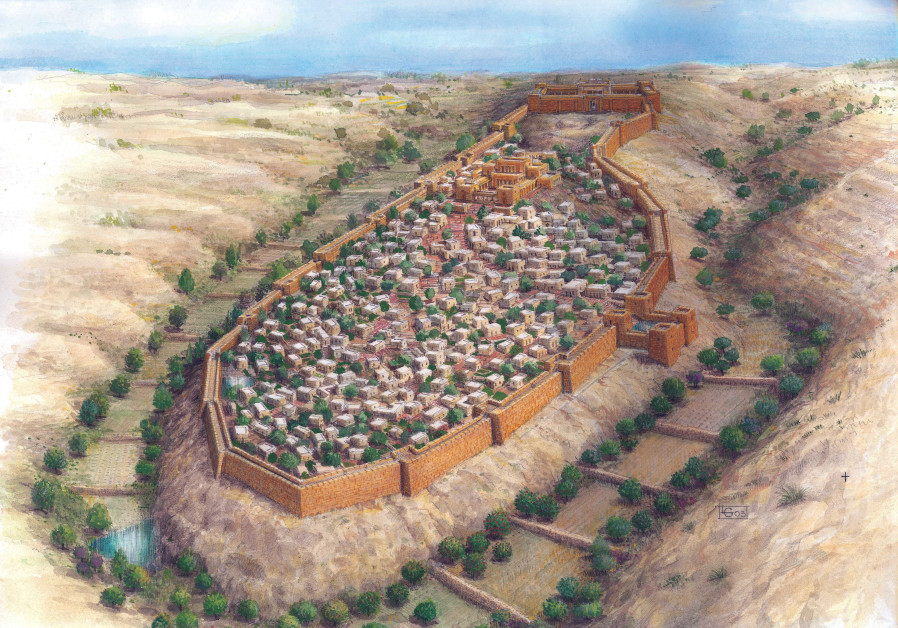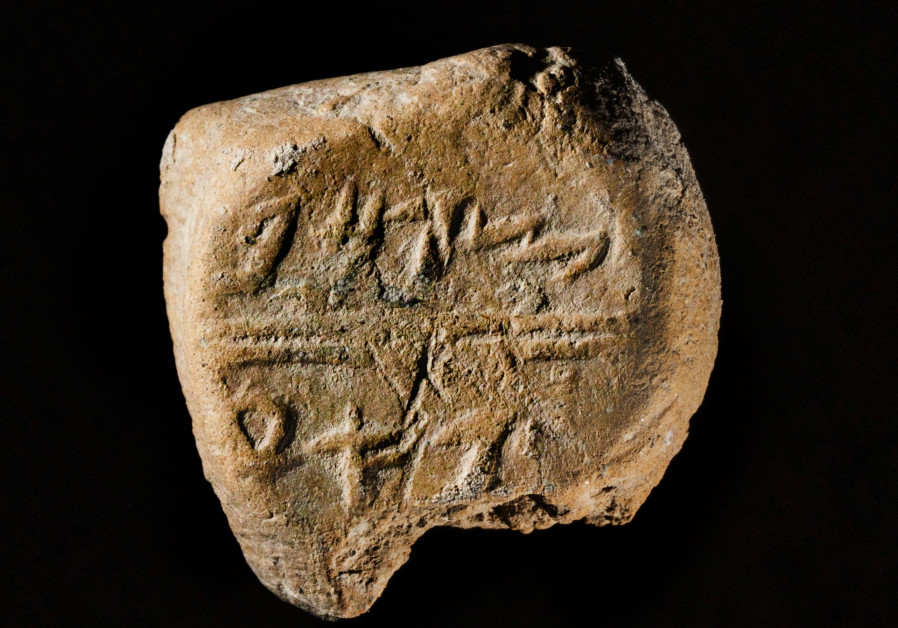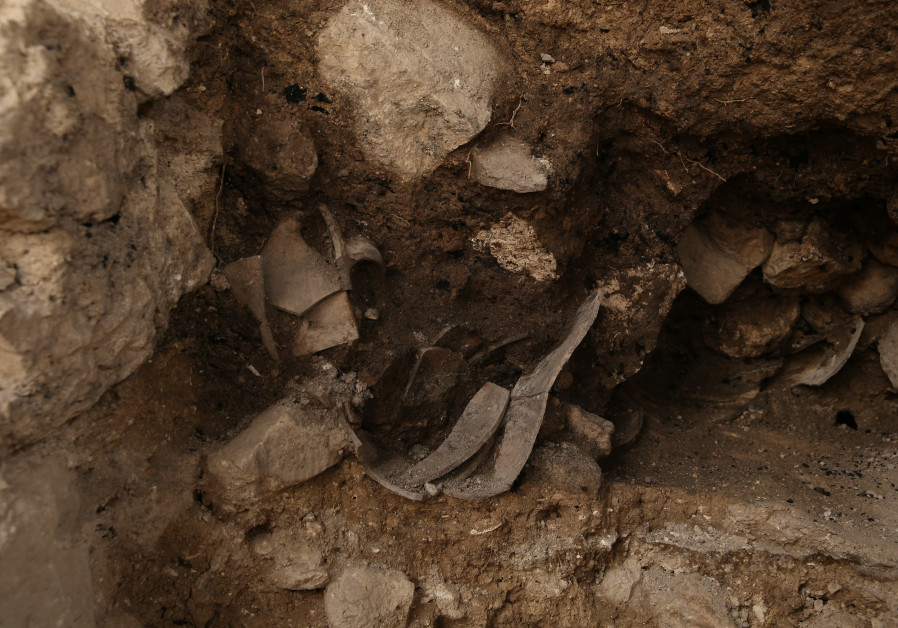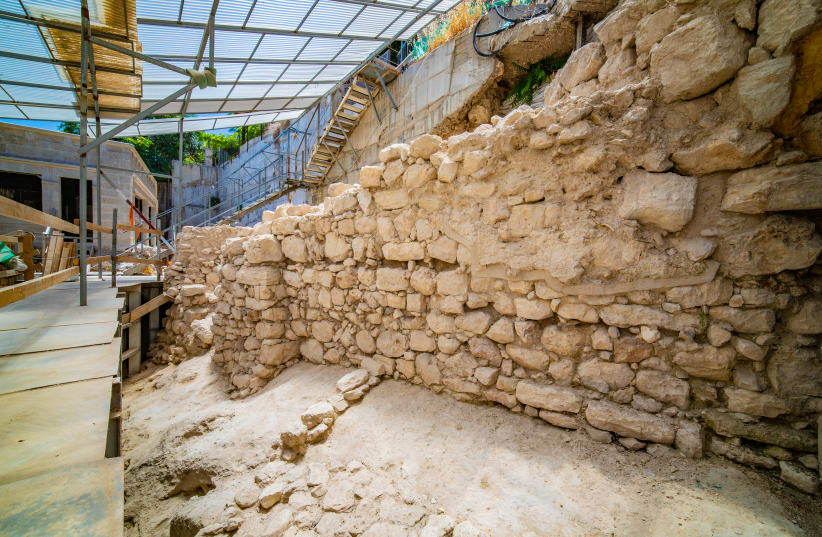A section of Jerusalem’s city wall built some 2,700 years ago and mostly destroyed by the Babylonian army in 586 BCE was uncovered by archaeologists in the City of David National Park, the Antiquities Authority (IAA) announced Wednesday.
The massive structure – some 5 m. wide – was built on the steep eastern slope leading to the city, just a few dozen meters away from the Temple Mount.
Probably the steepness of the area preserved the structure from destruction during the Babylonian conquest – a vivid account of which is offered in the Bible – since the invading army likely accessed the city from an easier path.
“By the ninth day [of the fourth month] the famine had become acute in the city; there was no food left for the common people. Then [the wall of] the city was breached.... On the seventh day of the fifth month – that was the 19th year of King Nebuchadnezzar of Babylon – Nebuzaradan, the chief of the guards, an officer of the king of Babylon, came to Jerusalem. He burned the House of the Lord, the king’s palace, and all the houses of Jerusalem; he burned down the house of every notable person,” reads the last chapter of the Book of Kings II.


For the archaeologist, uncovering the remains was very emotional, as related by Dr. Filip Vukosavovic of the Ancient Jerusalem Research Center, a codirector of the excavation with Dr. Joe Uziel and Ortal Chalaf on behalf of the IAA.
“When we exposed the first part of the wall, an area about 1 m. per 1 m. large, I immediately understood what we had found,” he said. “I almost cried.”
Indeed, the remains not only present an incredible testimony about centuries of life in Jerusalem and their tragic end but they also solved a decades-long archaeological mystery. During excavations in the area led by British archaeologist Kathleen Kenyon in the 1960s and by archaeologist Yigal Shiloh in the 1970s, remains of a massive wall were unearthed in two different spots of the slope. However, since the two structures did not appear to be connected, most scholars did not believe that they were part of a city wall, whose presence was described in the Bible but still needed to be proven by archaeological evidence.
“Now we can say with certainty that the city wall did exist, at least on the eastern slope,” Vukosavovic said. Since the eastern slope represented the most difficult approach to access Jerusalem, it is safe to assume that also the rest of the city was surrounded by a wall, he added.


“The city wall protected Jerusalem from a number of attacks during the reign of the kings of Judah, until the arrival of the Babylonians who managed to break through it and conquer the city,” said Vukosavovic, Uziel and Chalaf.


While the newly uncovered section still has to be dated independently (“We are working on getting some radiocarbon dating,” Vukosavovic noted), the other two sections were built around the eighth century BCE, in a period also known as the First Temple period.
Behind the remains of the wall, the ruins of some houses are still visible.
“In one, we found ashes that we believe date back to the Babylonian invasion,” said Vukosavovic.


In addition, the archaeologists uncovered multiple artifacts that offer a glimpse into the daily life of Jerusalem when the wall was still standing, and after its fall in 586 BCE: fragments of pots, pans and other vessels, seal impressions, some of them carrying inscriptions – for example, “lamelech” (to the king), which was usually featured on jars used for tax collection. A small Babylonian seal stamp made in stone was also found.
“Maybe it was dropped by one of the soldiers, or maybe it belonged to a Jerusalemite who liked Babylonian-style objects, or maybe it dates back to a later period and was owned by those who lived in the city after its destruction,” Vukosavovic remarked.
WHILE THE wall on the eastern slope remained standing – to the point that centuries later it would be used as a foundation for new buildings – Jerusalem was burned down, the Temple destroyed, and the Jews sent into exile.
Similarly, this happened again some 500 years later – when the city was again thriving – this time at the hands of the Romans. The second destruction took place on the ninth day of Av, on the same date as the first. This year that day falls on this coming Sunday.
To this day, Jews all over the world fast and mourn the loss of Jerusalem, commemorating these days of war and destruction millennia ago, as witnessed by the archaeologists’ new finds of ancient white stones.
